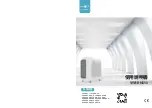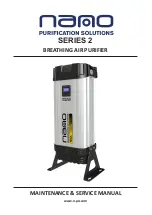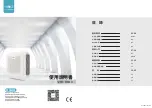
HE3XRT
Due to continuing product development, specifications are subject to change without notice.
© 2012 RenewAire LLC
134773_005 HE3XRTMan_Jan12.indd Revised 01/2012 www.renewaire.com
Page 6
Sound Attenuation
General Practices
Take these simple steps to attenuate noise from the unit.
Outside the building:
The exhaust hood is the primary source of noise outside the
building. When practical, orient the exhaust air hood to point
away from houses or public areas.
At the Curb:
Cut the holes in the roof deck to fit closely around the duct(s)
passing through the roof deck. Seal all gaps around the duct(s)
at the roof deck.
Ducts:
Make sure the ductwork at the unit outlets is stiff enough to
resist the flexure and resulting booming associated with system
start-up and shut-off, as well as the turbulent flow conditions at
the blower outlets.
In general, provide smooth transitions from the ERV’s outlets to the
duct. The ducts connecting to the outlets should be straight for a
sufficient distance, with gradual transitions to the final duct size.
These guidelines are consistent with SMACNA recommended duct
layout practices for efficient and quiet air movement. Follow
SMACNA guidelines.
Radiated Noise
The HE3XRT is insulated with high-density fiberglass. This provides
significant attenuation of radiated sound from the unit itself.
The outlet ducts can be significant sources of radiated sound
as well. The FA duct should be insulated for sound control. This
insulation should start at the unit. At a minimum the first ten
feet of duct should be insulated. All parts of the FA and RA ducts
located in a mechanical space with noise-generating equipment
also should be insulated for sound control, both to minimize
sound radiation out of the FA duct, and also to control sound
radiation into both ducts.
Aerodynamic (Velocity) Noise
When sound attenuation is a design concern, the primary
consideration is velocity noise at the unit’s Fresh Air blower
outlet. The average velocity at the Fresh Air blower outlet is
3470 FPM when the unit is operating at 3470 CFM. The average
velocity at the Exhaust Hood outlet is 3040 FPM when the unit is
operating at 3070 CFM.
Danger of Electrical Shock when servicing an installed unit.
ALWAYS DISCONNECT POWER SOURCE BEFORE
SERVICING! More than one disconnect switch may be
required.
Proper Wiring Size Selection and Wiring Installation
are the Responsibility of the Electrical Contractor.
Before bringing power to the unit check unit nameplate
to confirm it matches the voltage and phase of the
power you are supplying.
Remember that your field connections need to be
accessible for inspection.
Electrical Specifications
Electrical Options are identified on the Unit Label (located near
electrical box). Find the complete Unit Model Number in the
lower left corner of the Unit Label.






























